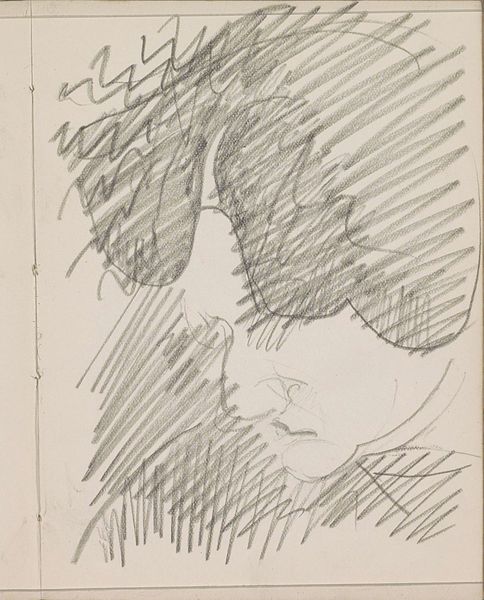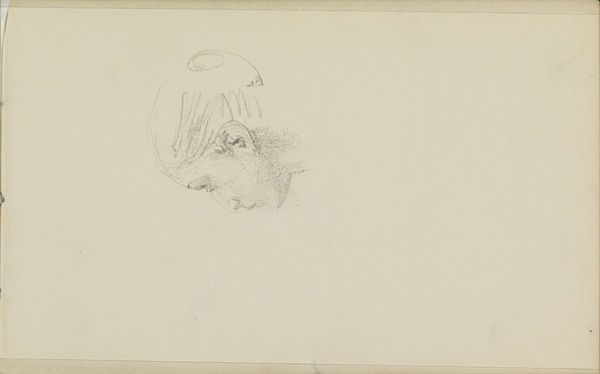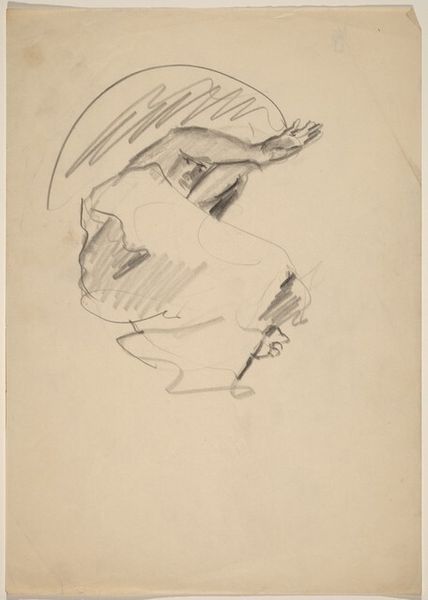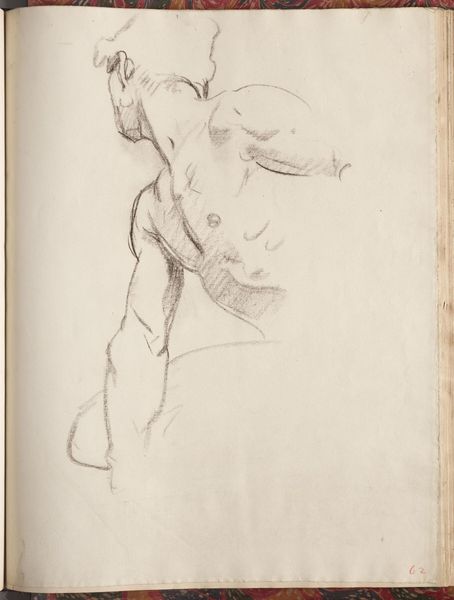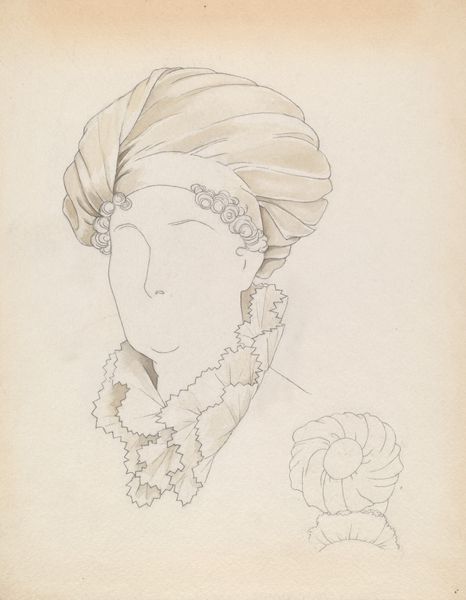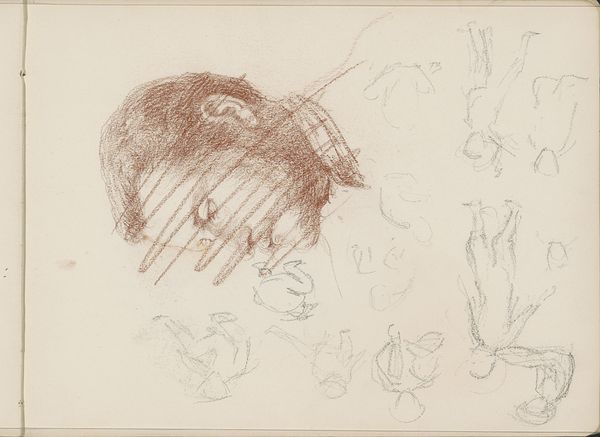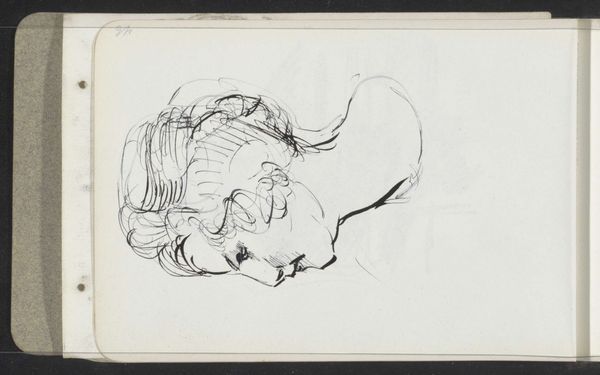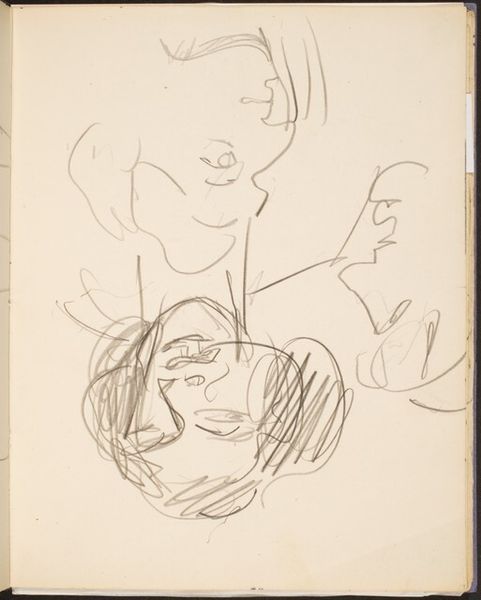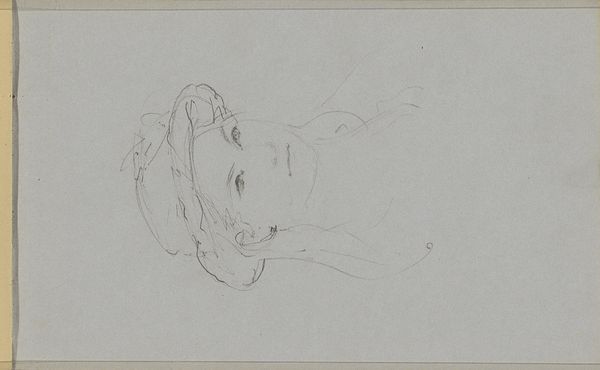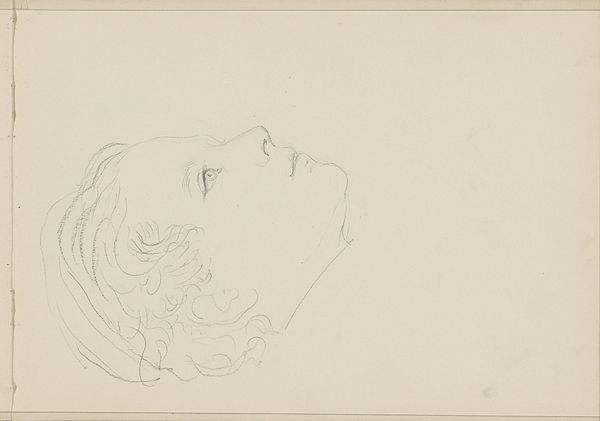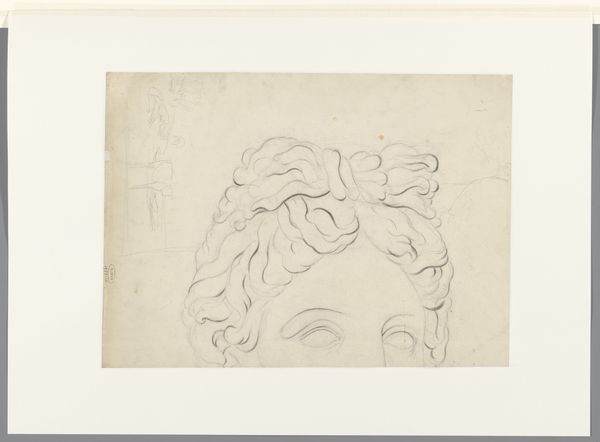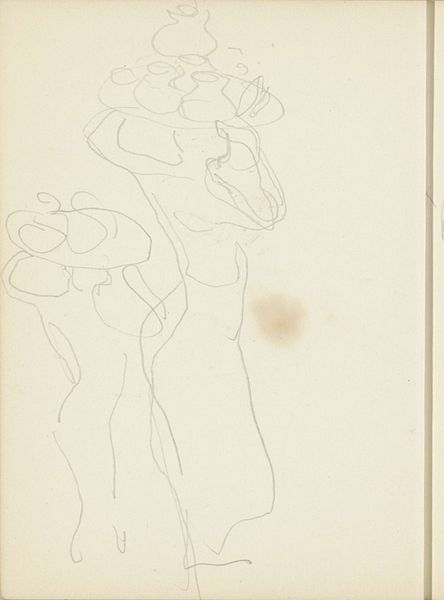
drawing, paper, pencil
#
drawing
#
paper
#
pencil
Dimensions: overall: 28.4 x 22.5 cm (11 3/16 x 8 7/8 in.)
Copyright: National Gallery of Art: CC0 1.0
Curator: Looking at Eva Noe’s "Headdress," made around 1937 with pencil on paper, I’m immediately struck by its delicate and ghostly quality. It feels like a whisper of another era. Editor: A whisper is right. This simple head covering seems almost a symbol of repression, a visual encoding of prescribed gender roles and the obscured face of female identity. Curator: Huh, I saw something quite different; it sparks my curiosity with its incomplete face. It reminds me of a sketch from an atelier. Noe's work radiates with the intimacy of observing a figure in her personal world, don’t you agree? Editor: Well, let's remember that even seemingly simple sketches were very rarely without the underpinnings of social positioning and power dynamics at play. I see not only an intimacy, but potentially a suffocating, restrictive element to its softness. After all, who was the garment intended for, and what would have been the garment’s intended purpose? Curator: Now you’re reminding me of art’s potential to transcend the quotidian to touch on bigger emotional stuff. Perhaps Noe herself also sensed something like a melancholy undertone through the materiality. What I adore is how an unassuming pencil drawing allows us to spin wildly different narrative universes around itself. Editor: Right, but consider also Noe’s likely context as a woman artist. To render women's garments and not a female body raises fascinating questions. What stories might be suggested? Absence versus presence is powerful in art and resistance. What we may deem beautiful, perhaps is also born out of struggle. Curator: Okay, I hear that! Maybe in looking for answers, one finds a whole garden of unexpected questions instead. That's what I will cherish about the experience, thinking with the garment itself. Editor: For me, the piece becomes less about pure aesthetics and more about engaging critically with both what is shown, but most essentially, what is NOT revealed and instead remains invisible. It demands awareness of social implications tied to identity and historical legacy.
Comments
No comments
Be the first to comment and join the conversation on the ultimate creative platform.
